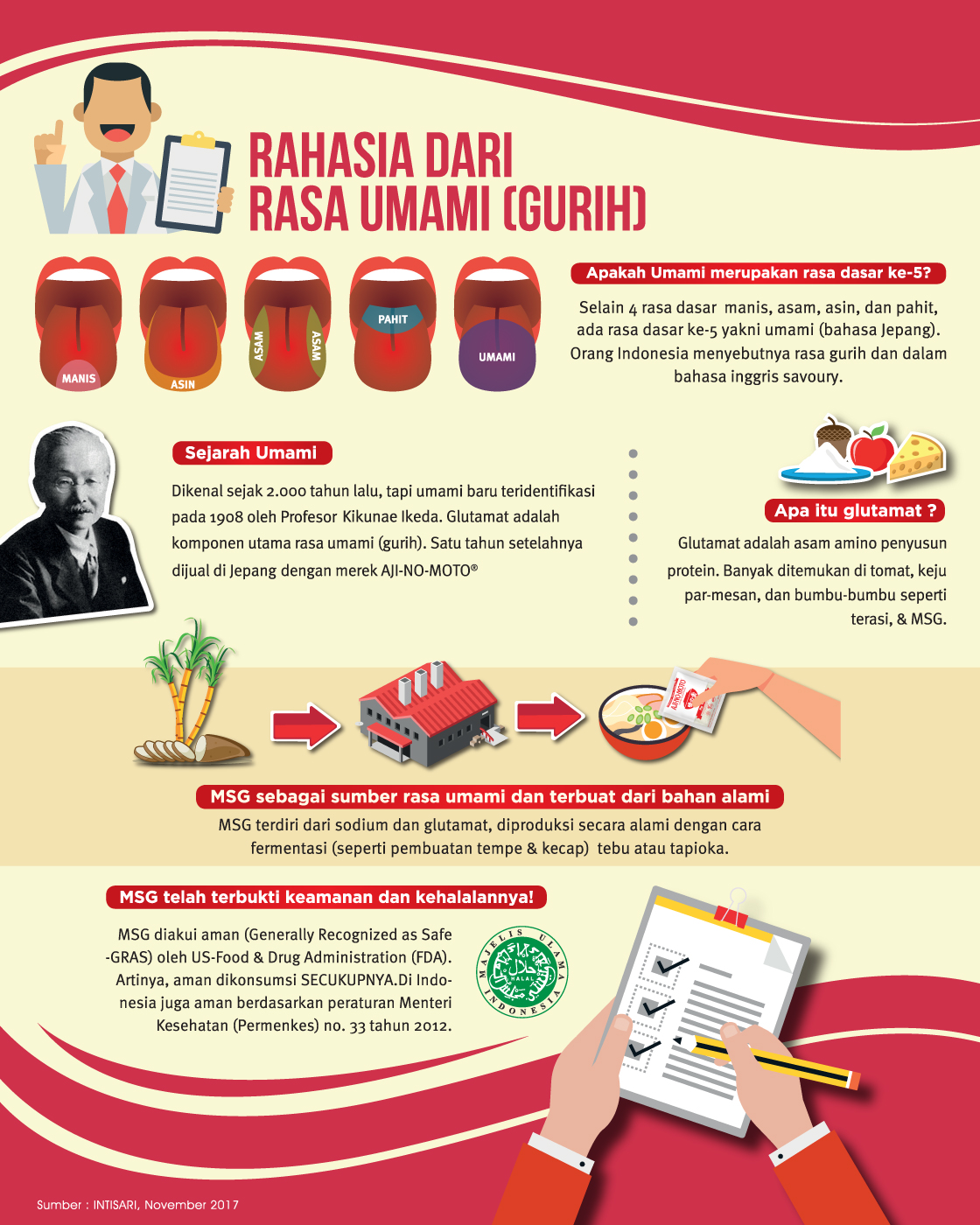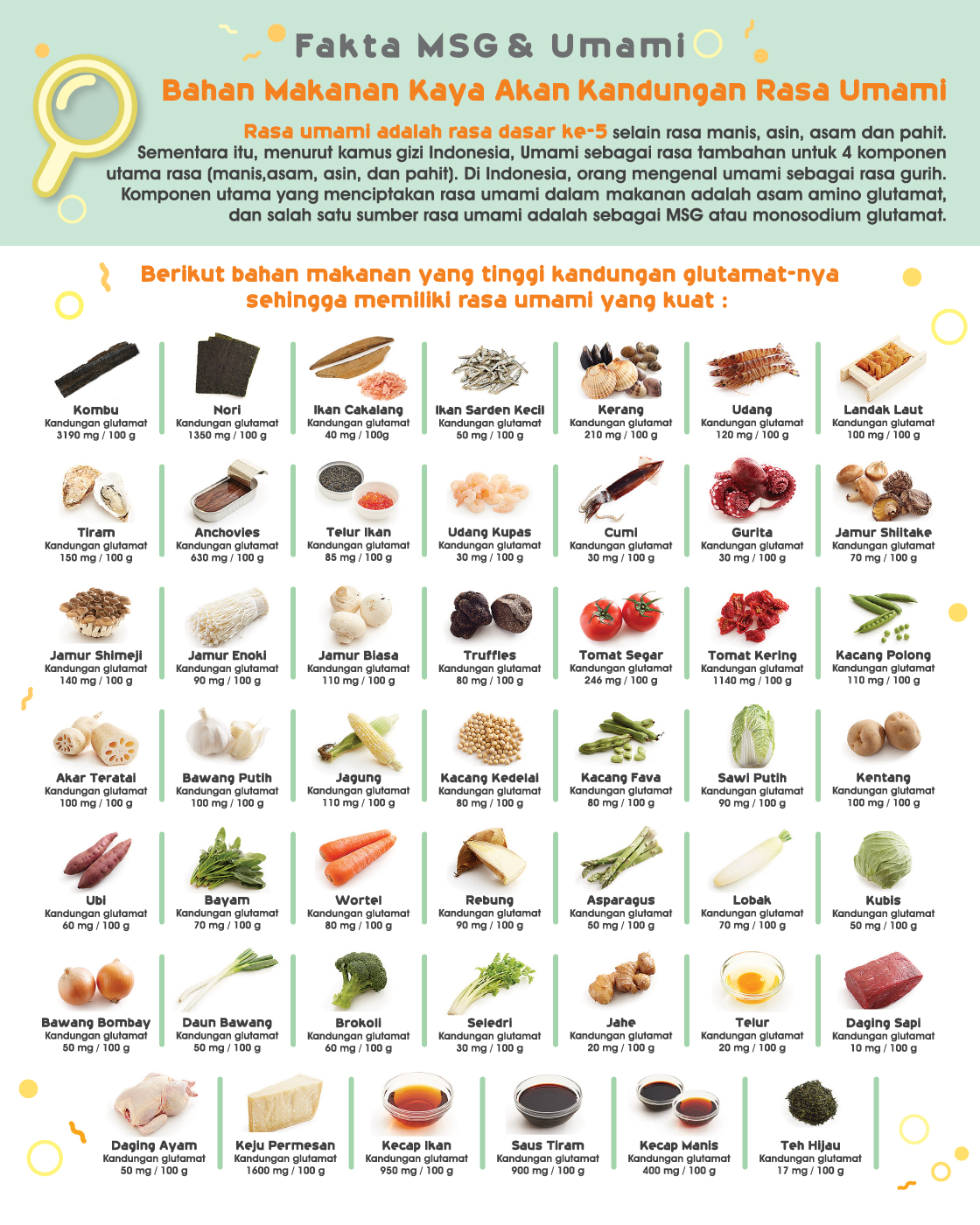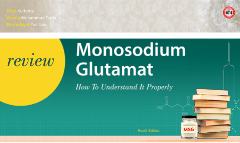Umami Seasoning
Umami is the 5th basic flavor other than sweet, salty, sour and bitter taste. Meanwhile, according to Indonesian nutritional dictionary, Umami as an additional flavor for the 4 main components of flavor (sweet, sour, salty, and bitter). In Indonesia, people know umami as tasty. The main component that creates the umami taste in food is the amino acid glutamate, and one of the sources of umami taste is as MSG or monosodium glutamate.
The History of Umami
- 1908
- Dr. Kikunae Ikeda discovered umami in the extract of Japanese seaweed, or kombu
- 1912
- Dr. Ikeda presented his discovery at the 8th International Congress of Applied Chemistry, Washington-USA, and defined Umami as follows: "Those who pay careful attention to their tastebuds will discover in the complex flavor of asparagus, tomatoes, cheese & meat, a common & yet absolutely singular taste which cannot be called sweet, or sour, or salty or bitter…"
- 1985
- Umami gained global scientific acknowledgement as the "5th Basic Taste"
Glutamate is the Key of Umami Taste
Foods with Umami taste can be found everywhere in the world, even in the Europe
Indonesia too has rich Umami-tasting foods, such as tempeh, belacan (shrimp paste) and tauco (fermented beans used as seasoning)
Umami is also present in our daily foods.
Breast milk is in fact rich of Umami taste. Read the facts on umamiinfo.com
Aji-no-moto® (MSG) is source of Umami taste, as it contains 78% of glutamate, 12% of sodium, and 10% water.




